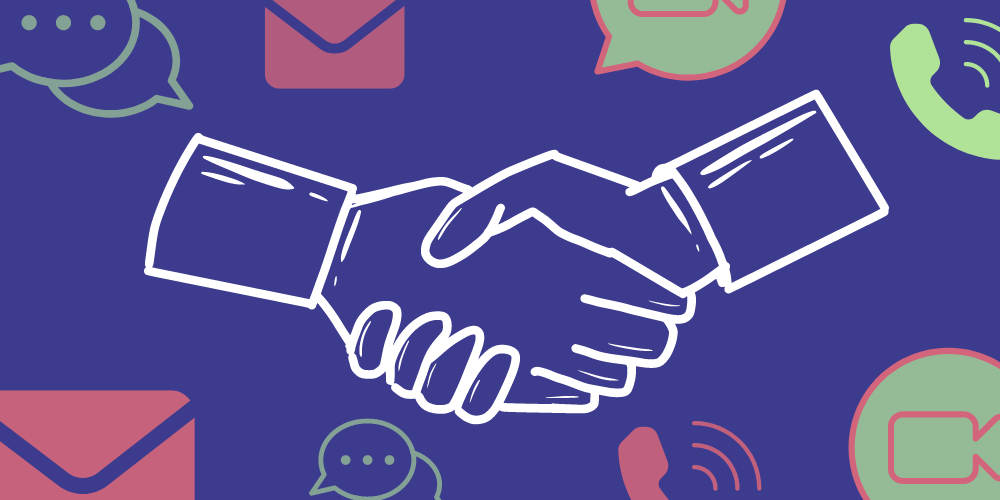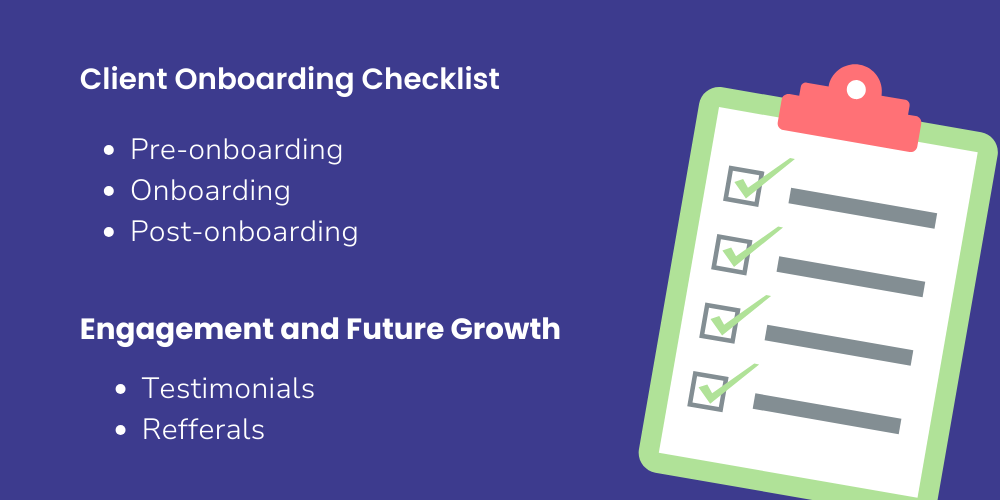Customer enthusiasm peaks immediately after a purchase, making the onboarding phase critical.
Proper onboarding sets the tone for the relationship, impacting satisfaction. It involves providing value, reinforcing the purchase decision, and guiding the customer towards maximizing product benefits. Onboarding can take various forms, from live interactions to digital communication, but the goal remains the same: ensuring customer success. In advertising agencies, the account team, particularly account managers, often handle this vital process.

So what is customer onboarding?
Onboarding refers to the activities that occur immediately following a transaction, aimed at guiding the customer towards successful product adoption.
A comprehensive guide for account managers and client relationship specialists
to streamline their onboarding process. We'll explore key elements, best practices, and actionable tips to ensure a positive client experience from the very beginning.
Major Deliverables during client onboarding meeting

Key Elements of a Successful Client Onboarding Process
- Clearly Define Goals and Expectations:
- Clearly outline project goals, deliverables, and timelines with your client at the outset. This transparency fosters trust and ensures everyone is on the same page.
- Clearly outline project goals, deliverables, and timelines with your client at the outset. This transparency fosters trust and ensures everyone is on the same page.
- Gather Comprehensive Client Information:
- Conduct thorough interviews and collect relevant data about the client's business, target audience, and specific needs. This information will inform your strategies and ensure your solutions are customized and impactful.
- Conduct thorough interviews and collect relevant data about the client's business, target audience, and specific needs. This information will inform your strategies and ensure your solutions are customized and impactful.
- Establish Open Communication Channels:
- Set clear communication protocols, including preferred contact methods and response times. Regular communication builds trust and keeps clients feeling informed and valued.
- Set clear communication protocols, including preferred contact methods and response times. Regular communication builds trust and keeps clients feeling informed and valued.
- Proactive Onboarding Management:
- Assign a dedicated point of contact within your team to guide the client through the onboarding process. This dedicated person acts as the client's champion within your organization.
- Assign a dedicated point of contact within your team to guide the client through the onboarding process. This dedicated person acts as the client's champion within your organization.
- Deliver Value Early and Often:
- Don't wait until the project is complete to showcase your expertise. Look for opportunities to demonstrate the value you bring early on.
- Don't wait until the project is complete to showcase your expertise. Look for opportunities to demonstrate the value you bring early on.
- Onboarding Education and Resources:
- Equip your clients with the necessary resources and information to understand your processes and effectively collaborate with your team. Provide access to relevant training materials, FAQs, or knowledge bases.
- Equip your clients with the necessary resources and information to understand your processes and effectively collaborate with your team. Provide access to relevant training materials, FAQs, or knowledge bases.
- Feedback and Continuous Improvement:
- Solicit feedback from your clients throughout the onboarding process and incorporate it into your procedures. Continuously refine your onboarding strategy based on client feedback and data insights.

Client Onboarding Checklist
Customer onboarding requires good project management skills, and checklists can be a valuable tool. Here's a sample checklist you can adapt for your organization:
Pre-Onboarding:
Receive handoff from sales team.- Know the Key People from the client side. Know their names, titles & roles in their team so that you can greet them correctly and confirm with them for any approval you will need for each scope of work with them in the future,
- Create customer account within relevant internal systems for tracking information. Send customer legal, finance, and scheduling information.
Onboarding Process:
- Establish calendar with WIP meetings after onboarding.
- Prepare a document for small monthly goals and quarterly goals based on the objectives.
- Cover all dates for implementation and adoption.
- Inform internal teams about new customer, including key dates and responsibilities. Schedule and hold kickoff meeting with stakeholders (and/or shareholders).
- Establish communication channels (preferences, chat teams, etc.).
- Schedule regular meetings to assess progress for next WIP meetings.
Post-Onboarding:
- Conduct formal review with client to confirm successful onboarding is completed. Mostly via email send the meeting recap note of the information about the onboarding.
Engagement and Future Growth:
Engagement is very high during onboarding, so be sure to plant seeds for the future too. This is a good time to offer a preview of key future milestones:
- Review of possible expansion of the relationship over time
- Request for referrals.
Onboarding is usually considered complete once the customer has implemented your product into their routine, and the people using your product are familiar enough with the product to use it as planned.
.png?width=1000&height=500&name=client%20onboarding%20checklist%20(1).png)
Best Practices for Client Onboarding
- Personalize the Experience: Tailor the onboarding process to each client's specific needs and industry.
- Utilize Technology: Leverage online tools and project management platforms to streamline communication, document sharing, and task management.
- Celebrate Milestones: Acknowledge key achievements throughout the onboarding process to maintain momentum and client engagement.
- Focus on Client Success: Your ultimate goal is client success. Keep this principle at the heart of every onboarding decision.
Conclusion of client onboarding practices
By implementing a well-structured and client-centric onboarding process, you can lay the groundwork for successful client relationships. A seamless onboarding experience fosters trust, demonstrates expertise, and sets the stage for long-term collaboration and mutual success.





Leave a Comment